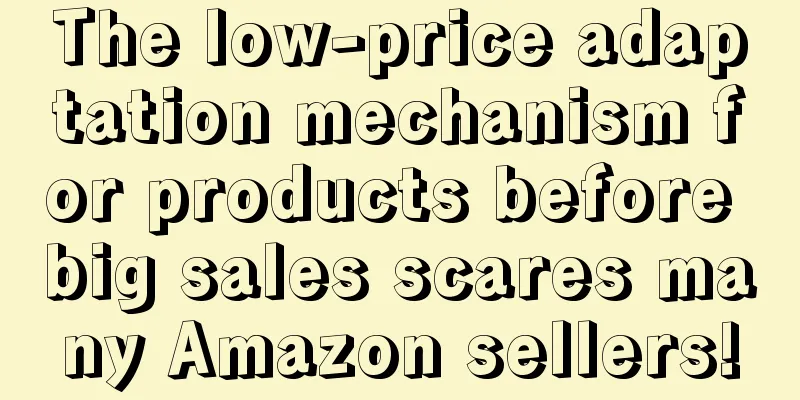How can small sellers use the concept of "substitution" to develop new ideas in the existing supply chain?

|
VictoryXue I have previously published an article [ I have learned some lessons about product selection and supply chain in the past two years, and I hope to discuss them with you... ] which contains a section on [Supply Chain Thinking]
My thoughts come from several competing products I recently discovered. I’ll just give one example: B0CZRVRJ6Y . This product is just an inflatable cushion for leg relaxation. Now it has a new use, with a profit of up to 70% . (Although the volume is not large, this must be an excellent product selection idea), and the supply chain is very mature, without mold opening and MOQ restrictions. Therefore, I extended my supply chain process module.
1. Think about the demand. Put aside the characteristics of competing products. What are the pain points and itch points behind this demand? Take the example above. The essential demand of this product is to separate children and stop them from fighting in the car.
3. How to maintain product micro-innovation insights and continue to be lean in the complex supply chain docking and communication? Behind this question is that in the process of a lot of searching, we often forget our original intentions and think that it is OK once we find it. In fact, although it is completed, it cannot last long.
"Wonderful Reply" Gnitliang - a fine product development Agree with: Aqua Time, Retired, Persistence is Victory, DTMDPD, YYRRPP more» It seems that the OP's product selection and development methods are very similar to my current ones, haha. Let me share my humble opinion and hope it will stimulate discussion. It can be understood as not letting the factory's current products affect your judgment of the product. Although it will be faster to find factories and products with demand, in the process of proposing hypotheses and verification, you can quickly deepen your research on competing products and different materials and fabrics of products, and deepen your understanding of the product. Sellers wear sea Agree from: JACKLEO, JIUyyiiz, zengjianwen001, and the little sister who travels through the sea The original poster's idea coincides with mine. Most small shops do not have a fixed supply chain for product selection. It is normal that they cannot find a factory willing to cooperate when the order volume is small and unstable. Flash Wolf - Hello Hello Hello Endorsed by: AAthena I am also doing it part time, let me tell you my thoughts. I have just started in the industry, so please don't criticize me if my words are wrong. Woooooo Agree with: Gnitliang, 123卷儿123, 路不识-Jatty Small sellers are not so much leveraging the supply chain as leveraging product ideas. Just like the link posted by the original poster, it is actually just the same product in a different application scenario. For example, a long time ago, a bamboo basket for steaming buns could be transformed into a soap holder. Sometimes a product may have miraculous effects in other application scenarios. EimChen - This person is lazy and leaves nothing behind. Agree from: Cynthiaaa, Guguai Laoren, Cross-border Wheat Family, Baofeng Baby No. 2, YYRRPP more » Small vendors are more likely to find relatively more creative products to sell. The idea and usage of the product in the link posted by the poster is worth learning, but this is not a long-term solution. According to the character of "Chinese people", seeing your high profits and relative "blue ocean", the market will be crushed in a few months.
Anonymous user Agree with: Schwarzzz Sometimes I am really curious, why do some people always get the lowest price in the market when they launch products? The cost of our company's development is no different from that of 1688, and the profit margin is really small. There is really no advantage to compare with competitors, and it is tiring to promote products. He is unwilling to bargain for development. A big sunny rose Agree with: Anti-Japanese Hero Du Dapeng This idea can be tried by companies that have already reached a certain scale or individuals with a certain amount of start-up capital. But it is just a try. The market is too competitive now. You have to be cautious before opening a mold. It is easy to lose everything. |
Recommend
What is the Top Products Program? Top Products Program Review
Handled by AliExpress is a key project of AliExpre...
Good news! Amazon waives FBA storage fees, small sellers have a chance to reach 100 orders a day...
Good news! Amazon waives FBA storage fees , small...
U.S. online item prices fall for the ninth consecutive month. Which categories are worth paying attention to?
It is learned that recently, Adobe released the la...
What is the 616 Global Cross-border E-commerce Festival? 616 Global Cross-border E-commerce Festival Review
The 616 Global Cross-border E-commerce Festival is...
Sales of this type of products have surged! How to prepare for node products in advance
The hottest topic these days is the Tokyo Olympic...
Comparison of shopping experience between Amazon, Shein and Temu: the results are surprising
It is learned that recently, a consumer from the ...
What is AFSL? AFSL Assessment
AFSL stands for Australian Financial Services Lice...
What is UL certification? UL certification evaluation
UL is the abbreviation of Underwriter Laboratories...
Taobao's cross-border sales surged 500 times! Amazon's listings have new rules
Latest news: Taobao’s overseas expansion plan upgr...
46% of American consumers prefer mobile shopping! Generation Z accounts for the highest proportion!
<span data-shimo-docs="[[20,"获悉,根据支付公司Klar...
It’s a sure thing! If you promote seasonal products in 2024 like this, it’s hard not to make a profit
As the world's largest online retail platform,...
Good news: Amazon launches new FBA inventory function! Sellers are expected to apply for warehouse expansion!
On July 13, Amazon changed the minimum IPI thresh...
What is Fpay? Fpay Review
Fpay was established in Vietnam and has reached co...
Update delivery fleet! USPS will purchase at least 25,000 electric delivery trucks!
In order to modernize the delivery network, optimi...
Big news! The first infringement case of 2020 has come, sellers should check their own products immediately!
There are less than twenty days left until the Sp...









